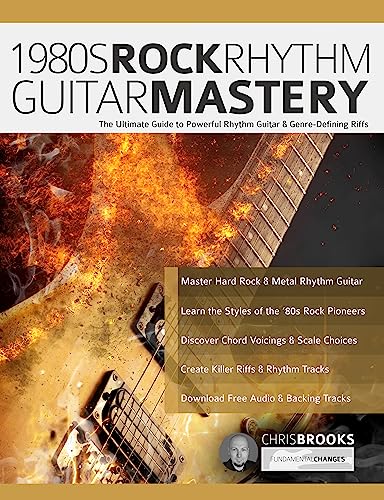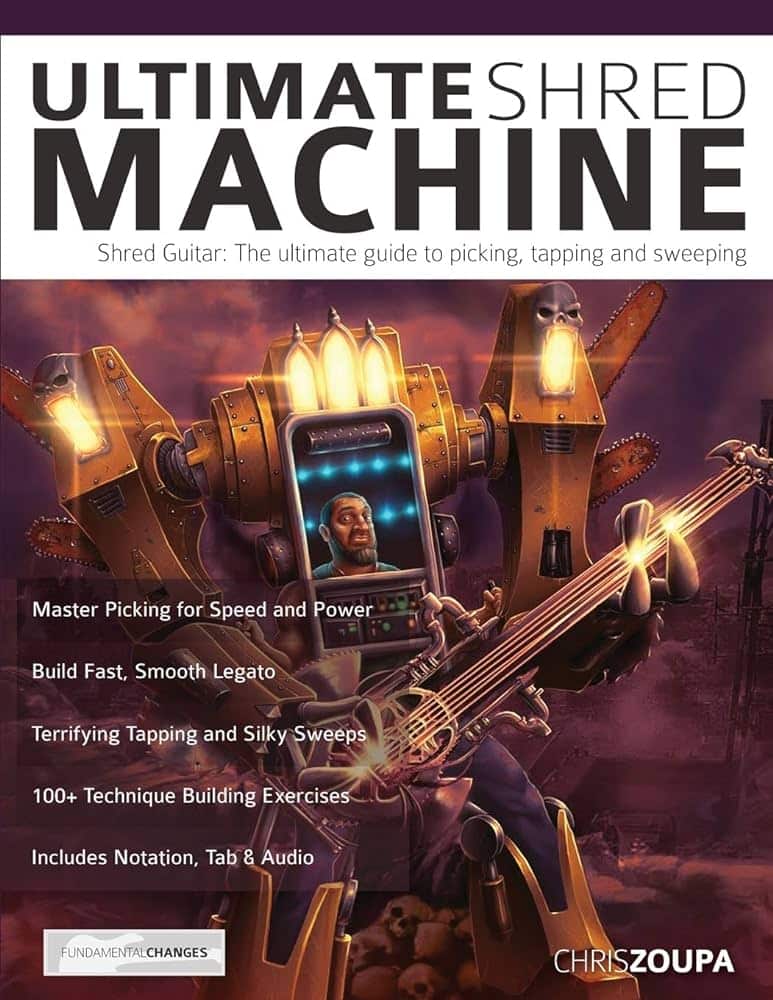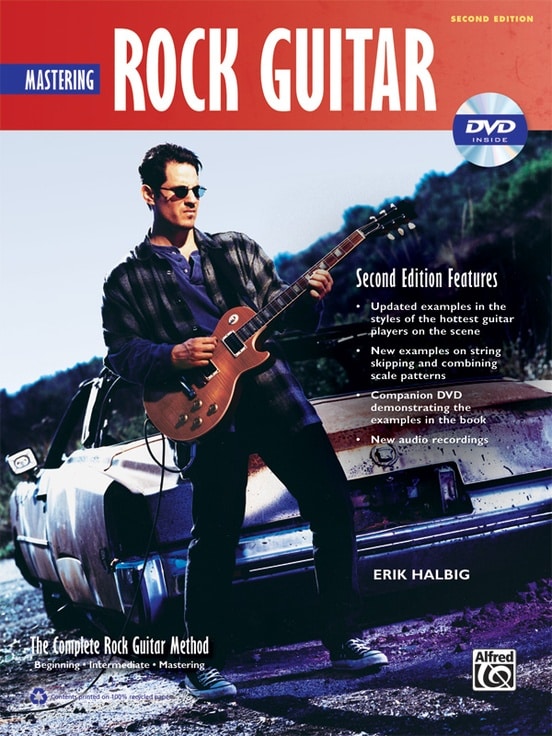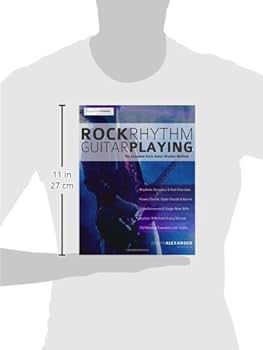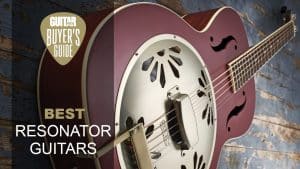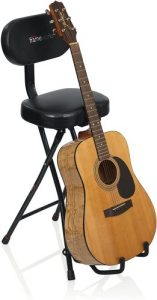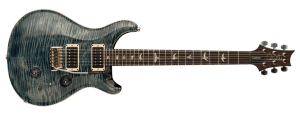Are you ready to unleash your inner rock star? Look no further than “The Ultimate Guide to Mastering Rock Guitar” – your ticket to becoming a guitar virtuoso. Whether you’re a beginner or already have some experience, this comprehensive guide is packed with tips, techniques, and insider secrets to help you take your guitar skills to the next level. From learning iconic rock riffs to mastering complex solos, this guide will equip you with all the tools you need to rock out like a pro. So grab your guitar and get ready for an epic musical journey!
Choosing the Right Guitar
If you’re dreaming of becoming a rock guitarist, the first step is choosing the right guitar. At the most basic level, you’ll need to decide between an electric or acoustic guitar. Each type has its own unique characteristics and advantages.
Electric vs. Acoustic Guitars
Electric guitars are the backbone of rock music. Their solid bodies and magnetic pickups allow for a wide range of tones and high volume levels. Their versatility makes them suitable for various subgenres of rock, such as blues-rock, hard rock, and metal. On the other hand, acoustic guitars produce a natural, warm sound without the need for additional amplification. They are perfect for rock ballads, folk rock, and acoustic performances.
When choosing between electric and acoustic, consider the sound you want to achieve and the type of rock music you wish to play. Think about your favorite rock guitarists and the instruments they use. Remember, there’s no right or wrong choice – it all depends on your personal preference and the style of rock you want to master.
Understanding Different Guitar Models
Once you’ve decided on electric or acoustic, it’s time to dive into the world of guitar models. Electric guitars come in a variety of shapes and sizes, such as the classic Fender Stratocaster, Gibson Les Paul, or the edgy Ibanez RG. Each model has its own unique sound and feel, so it’s important to try out different guitars to see which one resonates with you the most.
On the acoustic side, you’ll find dreadnought, jumbo, and concert guitar shapes, among others. Each shape produces a different tonal quality, so experiment with different models to find the one that suits your musical tastes.
Consider visiting a guitar store and spending some time playing different guitars. Get a feel for the neck, the weight, and the sound. Don’t rush this process – finding the right guitar is crucial for your journey as a rock guitarist.
Considerations for Buying a Rock Guitar
Before making a purchase, there are a few important considerations to keep in mind. First and foremost, set a budget. Guitars can vary widely in price, so determine how much you’re willing to invest. Remember, a higher price doesn’t always guarantee a better instrument. You can find great guitars at various price points.
Secondly, think about the type of rock music you’ll be playing. If you’re into heavy metal, a guitar with humbucker pickups might be the way to go. If you lean towards blues-rock, a guitar with single-coil pickups could be more suitable. Tailor your choice to the specific sound you want to achieve.
Finally, don’t forget about your comfort. Ensure the guitar feels good in your hands and is easy to play. Consider factors such as the weight, the width of the neck, and the action (the distance between the strings and the fretboard). A comfortable guitar will make practicing and performing much more enjoyable.
Essential Gear for Rock Guitarists
Now that you have your guitar sorted, it’s time to gather the essential gear that every rock guitarist needs. From amplifiers and effects pedals to straps and picks, these pieces of equipment will help you achieve the rock tone you’ve been dreaming of.
Amplifiers and Speaker Cabinets
An amplifier is an essential piece of gear for any electric guitar player. It not only amplifies the sound of your guitar but also shapes its tone. Tube amps are popular among rock guitarists for their warm and organic sound, while solid-state amps are known for their reliability and affordability. It’s worth trying out different amps to find the one that suits your style and budget.
In addition to an amplifier, you’ll also need a speaker cabinet. The cabinet houses the speakers and further enhances the sound projection. Experiment with different speaker configurations, such as 1×12 or 2×12, to find the one that delivers the desired sound and volume.
Effects Pedals and Signal Chain
Effects pedals are the secret sauce of many rock guitarists. They allow you to add unique tones and textures to your playing. Some popular pedals include distortion, delay, reverb, and wah-wah. As a beginner, start with a few basic pedals and gradually expand your collection as you become more familiar with their functions.
When setting up your effects pedals, it’s important to consider the signal chain. The order in which you connect your pedals can significantly impact their sound. Generally, it’s best to start with modulation effects (like chorus or phaser), followed by gain-based effects (such as distortion or overdrive), and finish with time-based effects (like delay or reverb).
Guitar Straps and Picks
Rock guitarists often perform standing up, so a sturdy and comfortable guitar strap is essential. Look for a strap that can support the weight of your guitar and has ample padding to prevent discomfort during long jam sessions.
Picks, also known as plectrums, are small triangular tools that you use to strike the strings of your guitar. Different picks produce different tones, so experiment with various materials and thicknesses to find the one that suits your playing style. Medium-sized picks are a good starting point for most rock guitarists.
Guitar Maintenance Tools
Keeping your guitar in top shape is vital for maintaining its playability and sound quality. Invest in a few essential guitar maintenance tools, such as a set of Allen wrenches for adjusting the truss rod, a string winder for quicker string changes, and a polishing cloth to keep your guitar looking shiny and clean. Regular maintenance will prolong the life of your instrument and ensure it’s always ready to rock.
Basic Rock Guitar Techniques
Now that you have your gear, it’s time to start honing your rock guitar skills. These basic techniques will set the foundation for your rock journey and help you become a solid rhythm player.
Power Chords and Rhythm Playing
Power chords are a staple of rock music. They are simple, three-note chords that allow you to create heavy and aggressive sounds. Start by learning the shapes of power chords and practice transitioning between them. Once you’ve mastered the basic shapes, experiment with different rhythm patterns to create your own unique sound.
Palm-Muting and Alternate Picking
Palm-muting is a technique where you lightly rest the edge of your picking hand on the strings near the bridge. This produces a muted and percussive sound. Combine palm-muting with alternate picking (down-up motion) to create tight and precise rhythms. Start by practicing simple exercises and gradually increase your speed.
Bending, Vibrato, and Sliding
Bending strings adds expression and emotion to your playing. To bend a string, use your fretting hand to push the string up or down, altering its pitch. Start with small bends and gradually increase their range. Vibrato, on the other hand, is the slight and controlled variation of pitch on a sustained note. Experiment with different vibrato techniques to add character to your playing. Sliding involves smoothly transitioning from one note to another by sliding your finger up or down the fretboard. Mastering these techniques will bring your solos to life.
Hammer-ons and Pull-offs
Hammer-ons and pull-offs are techniques that allow you to play legato, where the notes flow seamlessly together. Hammer-ons involve picking a note and then using a finger from your fretting hand to “hammer” onto a higher note without picking again. Pull-offs, on the other hand, involve plucking a note and then using another finger to “pull off” to a lower note, again without picking. These techniques are essential for fast and fluid solo playing.
Mastering Rock Guitar Scales
To become a true rock guitar hero, you must master the art of scales. Scales are the building blocks of music and provide a roadmap for creating melodies, solos, and riffs. Here are a few scales that every rock guitarist should become familiar with.
The Pentatonic Scale and Its Variations
The pentatonic scale is the holy grail of rock guitar. Its five-note structure makes it easy to learn and highly versatile. Start by learning the minor pentatonic scale in different positions on the fretboard and practice improvising over backing tracks. Once you’ve mastered the basics, explore variations of the pentatonic scale, such as the major pentatonic or the blues scale, to add more color and flavor to your solos.
Blues Scale for Expressive Playing
As its name suggests, the blues scale is the go-to scale for capturing the soulful essence of blues and blues-rock music. It adds an expressive and emotional quality to your playing. Practice the minor blues scale and experiment with bending, vibrato, and sliding techniques to infuse your solos with a bluesy feel.
Modes and Exotic Scales for Advanced Rock Guitarists
For those seeking to push the boundaries of rock guitar, delve into the world of modes and exotic scales. Modes are permutations of the major scale and offer unique sounds and flavors. Start with the Dorian and Mixolydian modes, as they are commonly used in rock music. Exotic scales like the Harmonic Minor or Phrygian Dominant can add a touch of intrigue and sophistication to your playing. Explore these scales in different musical contexts to unlock new creative possibilities.
Building Speed and Accuracy
To truly rock, you need to have speed and accuracy in your playing. These exercises will help you develop fast and precise guitar skills.
Exercises for Finger Dexterity and Strength
Daily exercises that focus on finger dexterity and strength are essential for developing speed. Start with simple chromatic exercises, playing four notes per string with alternating fingers. Gradually increase the tempo as you become comfortable. Incorporate scales and arpeggios into your practice routine to further enhance your technique. Remember, consistency is key – practice these exercises regularly, and you’ll see noticeable improvement over time.
Metronome Practice for Timing and Precision
Using a metronome is crucial for developing impeccable timing and precision. Start by playing simple exercises, like scales or alternate picking patterns, at a slow tempo. Gradually increase the speed as you become more comfortable. Focus on playing in time with the metronome, ensuring each note is cleanly articulated. This disciplined practice will lay a solid foundation for your rock guitar playing.
Developing Clean Sweep Picking Technique
Sweep picking is a technique that allows you to play rapid, arpeggio-based passages with fluidity. Start by practicing slow, single-string arpeggio shapes, and focus on striking each note cleanly and smoothly. As you become more comfortable, increase the tempo and incorporate multi-string arpeggio shapes. Practice with a metronome to develop both speed and accuracy.
Advanced Rock Guitar Techniques
Once you’ve mastered the basics, it’s time to take your rock guitar playing to the next level with these advanced techniques.
Tapping and Two-Handed Techniques
Tapping involves using your picking hand to tap the fretboard, producing lightning-fast and intricate note patterns. Eddie Van Halen popularized this technique in the rock world. Experiment with different tapping patterns and incorporate them into your solos for a flashy and impressive sound. Two-handed techniques, like double stops and fingerstyle playing, also add complexity to your playing and allow for greater expressiveness.
String Skipping and Hybrid Picking
String skipping involves playing non-adjacent strings, creating interesting melodic lines and intervals. Practice string skipping exercises to develop agility and accuracy. Hybrid picking, on the other hand, involves using both your pick and fingers to pluck the strings. This technique allows for greater speed and versatility, especially in more complex rock passages.
Harmonics and Pinch Harmonics
Harmonics are bell-like tones produced by lightly touching the strings at specific nodal points. Natural harmonics are produced by lightly touching the string directly above the fret, while artificial harmonics are produced by combining a pick attack with a light touch on the string. Mastering harmonics will add depth and complexity to your solos. Pinch harmonics, also known as artificial harmonics, produce a signature squealing sound and are commonly utilized in rock and metal guitar playing. Experiment with different pick attack angles and locations to achieve that desired pinch harmonic scream.
Whammy Bar Techniques
The whammy bar, also known as a tremolo arm or vibrato bar, is a lever attached to the bridge of your guitar that allows you to manipulate the pitch. By pushing or pulling the whammy bar, you can create expressive pitch bends, dives, and vibrato sounds. Study the techniques of guitarists like Jimi Hendrix and Steve Vai to learn different whammy bar tricks and incorporate them into your playing. Just be aware that these techniques can take time and patience to master.
Creating Killer Rock Riffs
Rock music is known for its infectious riffs that get the crowd headbanging and air-guitaring. Here are some tips to help you create your own killer riffs.
Understanding Chord Progressions
Chord progressions are the foundation of any great rock riff. Familiarize yourself with common rock chord progressions, such as the classic I-IV-V, and experiment with different variations. Power chords work particularly well for creating heavy and memorable riffs. Don’t be afraid to venture beyond the traditional progressions and explore more complex and unconventional chord combinations.
Melodic and Rhythmic Phrasing
Melodic and rhythmic phrasing is what gives a riff its unique character and feel. Experiment with different note combinations and rhythms to create catchy and memorable motifs. Explore syncopation and offbeat accents to add a sense of groove and drive to your riffs. Don’t be afraid to let your creativity flow – the possibilities are endless.
Exploring Different Riff Styles
Rock music encompasses a wide range of styles, from bluesy rock to metal and everything in between. Study the riff styles of different rock genres and guitarists to expand your repertoire. Dive into classic rock, punk, grunge, or even progressive rock to discover new and exciting riffing techniques. Mix and match different styles to create your own unique sound.
Lead Guitar Playing
Playing lead guitar is the pinnacle of rock guitar mastery. It allows you to express your emotions and musicality through intricate solos and improvisation. Here are some essential tips for becoming a confident lead guitarist.
Improvisation and Soloing
Improvisation is the ability to create music on the spot, and it’s a crucial skill for any lead guitarist. Start by learning scales and arpeggios in different positions. Practice improvising over backing tracks in various keys and genres. Experiment with different techniques, dynamics, and melodic ideas. The key is to let go of any self-consciousness and allow your creativity to flow.
Learning Guitar Licks and Phrases
Learning guitar licks and phrases from your favorite rock guitarists is an excellent way to build your lead guitar vocabulary. Analyze the techniques and note choices used in these licks and incorporate them into your own playing. Combine them with your improvisation skills to create unique and captivating solos.
Developing Your Own Signature Style
While it’s essential to learn from your heroes, it’s equally important to develop your own signature style. Embrace your unique musical influences and experiences to shape your sound. Experiment with different tones, techniques, and phrasing until you find a style that truly represents you as a guitarist. Playing with emotion and authenticity will set you apart from the crowd.
Playing with a Band
Playing with a band is a transformative experience that takes your rock guitar playing to new heights. Here’s what you need to know to thrive in a band setting.
Understanding Band Dynamics and Roles
In a band, each member has a specific role, and understanding these dynamics is crucial for a tight and cohesive sound. As a guitarist, your role is to support the rhythm section, such as the bass and drums, while adding melodic and harmonic elements. Pay attention to the overall sound of the band, and always strive to serve the song.
Tips for Tighter Rhythm Playing
Tight rhythm playing is the backbone of any successful band. Focus on your timing and groove, locking in with the bass and drums. Use palm-muting and alternate picking techniques to create a solid and powerful rhythmic foundation. Practice playing with a metronome and strive for absolute precision. Remember, a tight and cohesive band sound starts with a solid rhythm section.
Communicating Musically with Bandmates
When playing in a band, communication is key. Make sure to establish clear and effective ways to communicate ideas, such as using hand signals or discussing musical arrangements during rehearsals. Actively listen to your bandmates and respond musically to their cues. Building musical chemistry and unity with your bandmates will elevate your live performances to the next level.
Learning Iconic Rock Songs
Studying and learning iconic rock songs is not only a fun way to celebrate the genre but also an excellent way to develop your rock guitar skills. Here’s how to approach learning these classic tunes.
Studying Guitar Parts in Classic Rock Songs
Start by selecting some of your favorite classic rock songs and dive into the guitar parts. Analyze the chord progressions, riffs, and solos. Break down the songs into smaller sections and work on mastering each part individually. Pay attention to the techniques used by the guitarist, such as bends, slides, and vibrato. Studying guitar parts in classic rock songs will give you valuable insights into the techniques and musical ideas that shaped the genre.
Techniques Used by Famous Rock Guitarists
Famous rock guitarists have left an indelible mark on the genre with their groundbreaking techniques. Take the time to study the techniques used by guitar legends like Jimi Hendrix, Eric Clapton, or Jimmy Page. Explore their approach to soloing, rhythm playing, and tone creation. Incorporate their techniques into your own playing, but don’t forget to add your personal touch and style.
Applying Song Repertoire to Your Playing
As you learn and master iconic rock songs, start incorporating them into your repertoire. Play them regularly to strengthen your technique, improve your timing, and enhance your overall musicianship. Once you’re comfortable with the songs, feel free to put your spin on them, adding your personal touch and improvisation. Playing iconic rock songs will not only boost your guitar skills but also fuel your passion for rock music.
Remember, mastering rock guitar takes time and dedication. Practice regularly, push yourself out of your comfort zone, and continually seek inspiration from other guitarists and genres. With perseverance and a love for the instrument, you’ll soon be shredding like a true rock star. Rock on!

